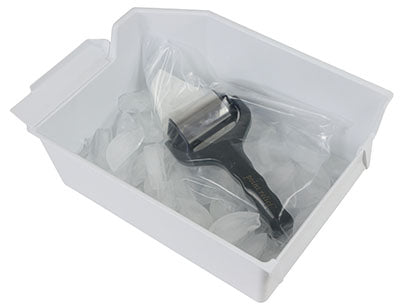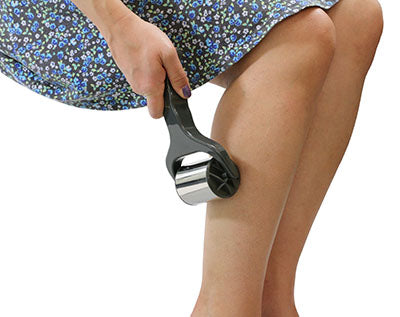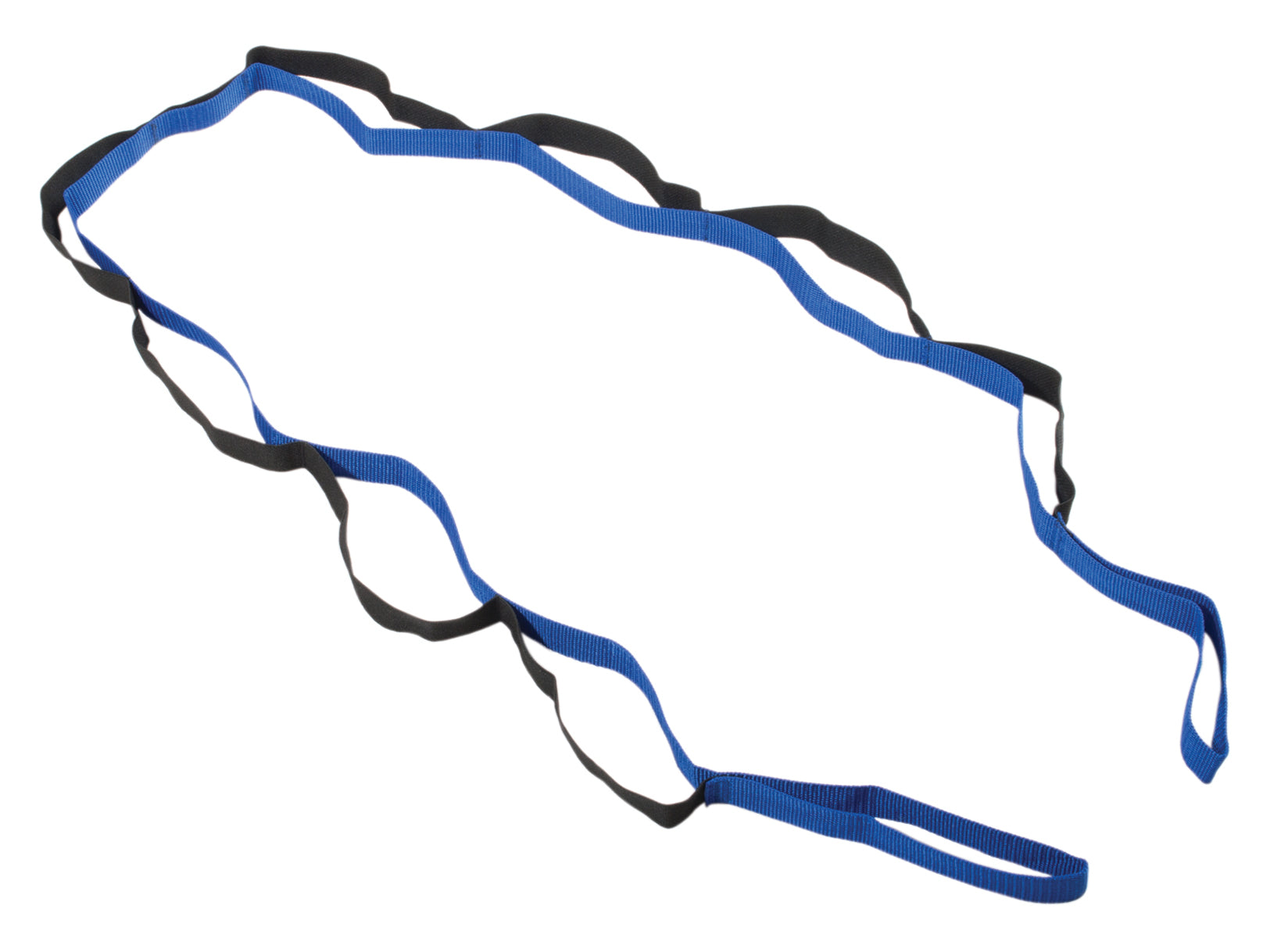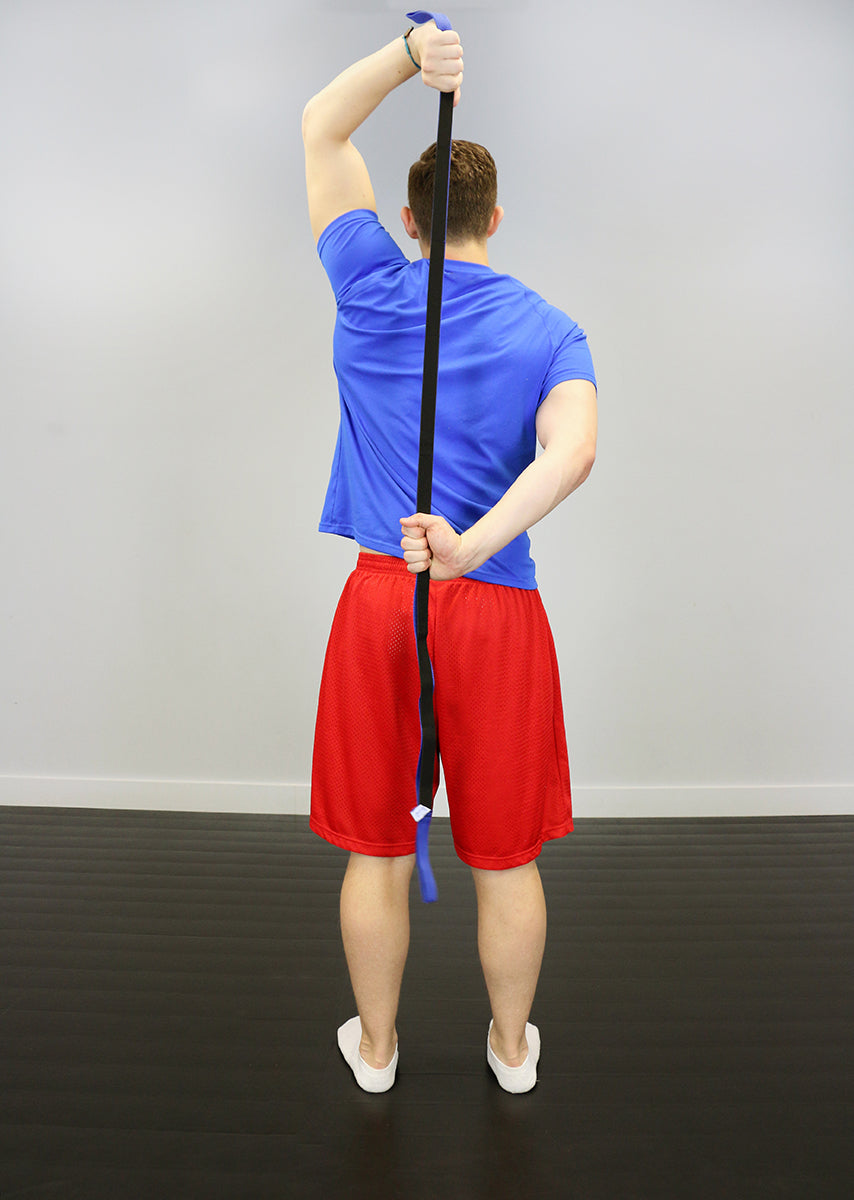Please note: The following information, content, and material of this article are meant for informational purposes only. It is not intended to serve as medical advice toward a specific injury or a substitute for a direct consultation, diagnosis, and/or medical treatment by a qualified physician or healthcare provider. With the knowledge that many athletes in the strength sports attempt a “go-it-alone” approach to injury, this information is provided to help individuals better understand their role and make smarter choices regarding recovery from injury.
Those who read the Troubleshooting Strength Injury Series are likely to fall into one of two camps. The first camp is someone who has previously been injured. People in this camp are likely looking for information to better explain their past injury and how to better avoid future injury.
Parts 1,
2,
3, and
4 have likely provided a lot of value to them. Camp 2 are those who are currently injured and trying to find help during their recovery from injury. For those individuals, Part 5 is incredibly useful.
RECENT: Troubleshooting Strength Injuries: How to Autoregulate
Parts 1-4 of the series have covered
the concepts of injury,
how to identify the warning signs of an impending injury,
how to work around mild injury while still progressing in your training or sport, and finally,
how to understand the interrelated factors that affect the body’s readiness to train (current training, current state of the body, faith, and recoverability) – a process known as autoregulation. Everyone should be reading Parts 1-4, but for those in Camp 1, these are likely the most valuable parts of the series.
The point of Parts 1-4 is to help people understand how to listen to the information their body is relaying to them and to be able to move forward in their training, competition, etc., without being derailed by injury. The amount of time and information spent on this process should be an indicator on how much effort needs to be placed on prevention and being able to intelligently work through the ups and downs of training to improve. Too many athletes are short-sighted and are unable to see the big picture. Regardless of the sport you compete in, the key to success is longevity. The two biggest reasons for quitting a sport are:
- You suck at said sport, and;
- Your body is too injured to continue.

Very few people reach their potential because of the inability to stay healthy over a long period of time. There is no amount of improvement that is worth a severe injury. Six months of pushing past your body’s capabilities and then being injured for three months is a shitty way to progress. Yet many fall into this trap and spend a large portion of their career with nagging injuries that hinder performance.
By spending time to truly understand and apply Parts 1-4 of this series, many can limit this cycle of pushing their body to the point of injury, and then trying to come back from that injury. I use the word “limit” very strategically, as no matter what, injury is a part of every sport. The goal here is to help reduce the severity and frequency of injuries.
If you are truly pushing for performance, you will always flirt with the line where peak performance ends and injury begins. If someone promises injury-free training or an injury-free career, they are either lying to you or haven’t done anything worthwhile in their own athletic career to know what they are talking about.
So, considering the above, what happens if you do find yourself in the wake of more serious injury? To clarify, a serious injury is an injury that cannot be worked around and actually removes you from training or competition. This would include significant muscle strains and tears, back spasms, or herniated discs, etc. It is not “I pulled my hamstring squatting Saturday, finished my training, and on Tuesday, it still felt too sore to deadlift.”
At this point, autoregulating your training has not helped, and significant tissue healing must occur in order to get back to training at 100 percent. For those in Camp 2 – those who are currently dealing with a significant injury, Part 5 will help serve as a road map to recovery.
Get an Idea of What is Going On
The first step in any injury is always to get an accurate idea of the extent of the injury. In the initial moments after injury, a lot of information can be harvested. This information will help you determine how severe the injury is and if a consultation with a medical professional is immediately necessary.- Was there a pop, snap, or crack when the injury occurred?
- Are there any divots or gaps in the musculature?
- Is any swelling or bruising present?
- Are you unable to move the involved joint through its full range of motion?
- Does it hurt when you cough, sneeze, or strain like when you’re preparing for a lift?
- Is there any numbness, tingling, or radiating symptoms present?
- Are you unable to bear weight on the affected side?
If you answered “yes” to one of these questions, the likelihood is still low.
If you answered “yes” to more than one of these questions, you need to start considering a consult with a medical professional as soon as you can.
Generally speaking, even if you answered “no” to all of the above questions, figuring out where you are at is most efficiently done by a reputable health professional’s evaluation. Hopefully, you already have someone like this as a resource. If not, you should attempt to find one.
Finding Quality Health Care
Just as not all plumbers, electricians, or other services are equal, not every practitioner will be of equal quality and skill. In an ideal world, you would search and find a provider who is skilled and understands your sport. At the least, they need to understand that you want to push yourself and that you have different demands than the inactive middle-aged adult that frequents their office.While trying to find this individual, start by doing some research on their website. See what kind of educational training they have, if they commonly work with athletes, and if they have done anything remotely athletic themselves. If you end up scheduling a visit, don’t be afraid to ask those same questions directly:
- What is your background working with sports injuries?
- How often do you actually work with athletes?
- What experience do you have in my sport and as an athlete in general?

The relationship between a doctor and patient is commonly misunderstood in that the doctor dictates the relationship. It is well within your rights to ask critical questions of any health care practitioner regarding your own care.
If you do not have access to a quality care professional or aren’t confident about their findings, you can also benefit from getting multiple opinions. If the diagnosis and recovery time between multiple professionals seem to coincide or differ, it will help you ultimately decide what’s best for you. Between these options, you should be able to get an idea of what is going on with your body. If you are unable to find any help, this is obviously unfortunate, but it does not doom your ability to recover from injury.
The tips in this article are meant to be guidelines to help anyone dealing with an injury improve their recovery time and return to activity. These strategies are useful whether you are receiving ongoing care or not. Even if you are spending time with a health provider three times a week, this only accounts for two to three hours out of the total 168 hours in a week. Therefore, your ability to make good decisions as an individual can be hugely impactful on your recovery.
Moving Forward
As noted already, taking an inventory of the events surrounding your injury are hugely important. It will provide insight and unveil warning signs you may have missed that you can learn to be more aware of in the future. However, once this information has been extracted from the situation, you need to accept the situation and move forward.This is not something that I pull from my medical schooling but from real-world knowledge. I have been on both sides of this coin as an athlete and provider, and I get it — this is much easier said than done. I know that it is not something you literally just let go of and you move forward and never look back once – that’s not what I’m saying. But sitting around pitying yourself is wasting precious time and energy that could be spent getting you better.
One of the worst parts about injury for an athlete is loneliness. Going from balls to the wall, active, and engaged with your teammates, coaches, and counterparts to sedentary, limited, and disengaged creates change in your routine and leaves a hole in the mental stimulation that a competitive athlete is used to and often reliant on.
In order to move forward, you must fill those holes with purpose and focus your attention elsewhere. Maybe that focus is on a weakness you have neglected or stress in your life that you put on hold because of training. If you were truly invested in your training before the injury, that means you have a lot of energy on tap — energy that can produce a lot of good if focused correctly elsewhere.
About six months ago, one of our team members had a pretty bad injury that required surgery and extensive rehab. He called me soon afterward to tell me what happened. Within the first few minutes of the conversation, there was no question in my mind that this person was not going to be held down by the situation that the injury created. He flat out said, “It is what it is. I will come back stronger than ever” within a few hours of the injury.
Now, do I think he never questioned that or didn’t have a single conversation in his head after the injury about “damn, this sucks”? No. I guarantee he did. But he clearly decided that his attitude was to move forward.
One of the hardest conversations I’ve had to have in athletics was with my brother when he found out that he tore his ACL in college. He had never been injured before, and he’d worked his ass off to start at the Division I level as a sophomore, only to get hurt in his second career start. That’s devastating, and when it’s your little brother, no emotions are held back from the conversation.

But once those emotions are out there, the conversation HAS to switch to moving forward — and that’s what happened. We agreed that this is part of the sport, and that this was now the current situation. It was time to move forward and put everything that was in his preparation for football into this rehab. That’s what he did, and his attitude was completely different moving forward. This is hands down the best thing you can do following a significant injury. Life is not easy, but your perception of the situation is going to be a huge driving force in your recovery.
Being able to put a negative event behind you is one of the best skills you can develop in life, and it certainly applies in an athletic injury as well. This allows you to focus on the next objective rather than occupying your mind with anger, confusion, and what-ifs that don’t produce any progression in your recovery.
Reduce Inflammation and Pain
Swelling, inflammation, and pain are almost synonymous when it comes to severe injuries. Swelling is a subsequent effect of inflammation. We are all familiar with swelling as the puffy congestion of fluid under the skin at the site of an injury.At a macro level, swelling is also an indication of the severity of the injury. Any time there is inflammation, there is a level of swelling, but if that swelling is clearly visible or palpable to the untrained person, it is a clear sign of significant injury. This is partially due to the role of swelling as a way of protecting the joint in cases of sprains.
In other cases, such as muscle tears, it is often present along with bruising, as blood vessels are torn apart and flood the area with excess fluid. In these situations, the swelling is often due to a lack of ability for the body to clear this fluid from the area.
Inflammation is the body’s natural response to trauma or foreign invaders. In injuries, inflammation’s role is to clear the debris and damaged tissue at the site of trauma in order for new tissue to be built. Although inflammation is necessary and essential to healing, too much inflammation can be damaging to other structures which are not injured. Inflammation also triggers a pain response in the body, which is why injuries can often be tender to the touch.
The first step in any injury should always be to control inflammation and pain. Again, although inflammation is a necessary step in the healing process, we do not want to be in this stage for very long. We also do not want the swelling to be excessive, either.
Methods for controlling pain and inflammation include traditional methods such as
icing, elevation, and pain-free movement. Although ice has taken some heat over the last few years, it still remains one of the most effective methods for acute injury. Icing should be done until the skin is numb in order to unlock its full potential as a pain reduction modality.
Pain-free movement should be accomplished as soon as possible as well. Keyword: PAIN-FREE. If this means using an object or reducing gravity to create a more passive movement, so be it. Movement stimulates receptors that help shut down pain through a process known as the Gate Theory of Pain. It also helps influence swelling out of the involved area and to be cleared by the lymphatic system.
These three processes should be continued daily for at least 72 hours in order to help move the recovery process along.
Keep Moving – Pain-Free
Movement will play an integral part throughout the entire healing process after an injury. Initially, movement is meant to simply keep fluid moving along and control pain. As the injury moves out of the first 72 hours, movement will switch over to a primary driver of the healing process. After this initial inflammatory stage, movement acts like an architectural engineer of the healing process. Movement creates stress on the tissues, which signal the need for tissue structuring to align along those stress signals.Care must be taken however to not over-stress these tissues, which can cause excessive microtrauma, restart the inflammatory process, and stall healing. For this reason, the exercise and range of motion of that exercise should be regressed as far as necessary to avoid pain during and after exercise. In regards to exercises and strain placed on the tissues, isometrics are the least strenuous. This is followed by concentrics, and finally, eccentrics. Range of motion is simply regressed to the range in which you can move without going over a pain measured at 2-3 on a scale of 1-10 (with 10 being the most painful).
So, by the rule of pain above, if you must regress an exercise down to an isometric in the early range of motion to start, you are not allowed to move up in exercise difficulty until you can complete isometrics through an entire range of motion without pain.
As you can see, in these situations, pain is a great guide during and after movement. If you push forward too much and find excessive soreness either during or after exercise, the movement, intensity, and volume need to be re-adjusted to get back on track.

Don’t Be Afraid to Continue Training
Now, before you go off cranking out some crazy shit, hold on — don’t hear what I’m not saying. I’m not saying that if you tore your pec on a Saturday, that you should be in the gym with a hole in your black and blue pec hitting sets of 20-rep dumbbell flyes on Wednesday.After the initial few days of healing and once the body has cleared the inflammation stage, blood flow is helpful to provide more nutrients and oxygen to the area to increase healing. Training in its essence will increase heart rate, and therefore, blood flow, even if it’s not directly to the involved region.
Furthermore, under the concept that proximal stability creates distal mobility, it is important to always involve breathing and hip strength in any recovery programming, even if the problem is a lower back injury. In fact, most problems in movement can be traced back to compensation patterns that were developed in order to create stability and force at the hip joint.
Lower Back Specific Tips
In most lower back conditions, it is important to figure out whether your spinal condition is flexion- or extension-intolerant and then avoid that position early on in the healing process.To do that, sit down on a chair and start from a neutral position. To test for flexion intolerance, drop your head forward to your chest and round your upper back. To test for extension intolerance, extend your head and back like you are looking to the ceiling behind you. If pain is produced in flexion, you are flexion intolerant, and vice versa.
From here, we also want to check and see if loading the spine is also a pain provoker. Starting from a neutral seated position grab the bottom of the chair and pull your body down into the chair. If this produces pain, you need not go any further. If there is no pain, go back to your intolerant position (either flexion or extension) and see if adding spinal load increases this pain. If this produces more pain, then load is involved in this position only. These are positions that you want to avoid during your recovery and likely strengthen down the road.
Breathing and creating a brace are also very important mechanisms in these kinds of injuries.
I have written extensively on proper breathing, which you can refer to here. The process of correct breathing, however, comes down to breathing down into the belly, utilizing the diaphragm to expand the lower rib cage and lungs.
A great tip for helping mitigate lower back pain is to get into what is termed a
90-90 position. This position involves propping the feet up on a bench, couch, or chair with the hips and knees flexed to a 90-degree angle. From this position, belly breathing for five to ten minutes can be highly beneficial.
Learn From Your Mistakes
“Those who fail to learn from history are doomed to repeat it.” – Winston Churchill.This holds true in all cases, including injury. The final tip is to utilize what you learned about the injury to adapt and improve how you train. Whether it be lessons learned from a practitioner, a trusted colleague, or your recollection of events that surrounded the injury, if you are returning from an injury without a clear plan of what needs to change, you are only setting yourself up for the next injury. This change doesn’t have to be monumental. It can be as simple as learning to listen to the warning signs and autoregulate better or as complicated as retraining movement altogether.
The goal of the Troubleshooting Strength Injuries Series is to educate and provide guidelines for strength athletes to better understand how to troubleshoot an injury.
By going through the process of critical analysis presented in this series, the athlete should have developed a basic understanding of how injury occurs, how to identify the causative factors of an injury, how to pivot and autoregulate training, and how to modify activities and training if a severe injury occurs. This troubleshooting series should have also provided better competence in distinguishing a mild injury that can be worked through from a more significant injury in which you should seek professional help.
When this troubleshooting guide does not help your pain, this should be a sign to seek further assistance from a healthcare professional. I sincerely hope this series has been able to provide some insight and help you. If after reading this series, you still have some questions, please do not hesitate to reach out.
Part 1: Redefining Injury
Part 2: Warning Signs of Injury
Part 3: What is Autoregulation?
Part 4: How to Autoregulate






































































